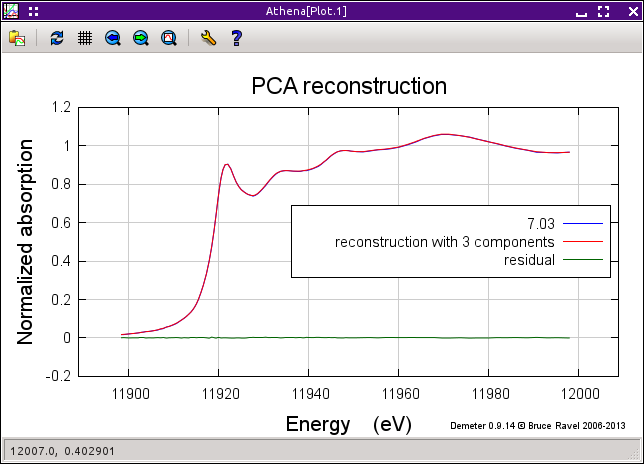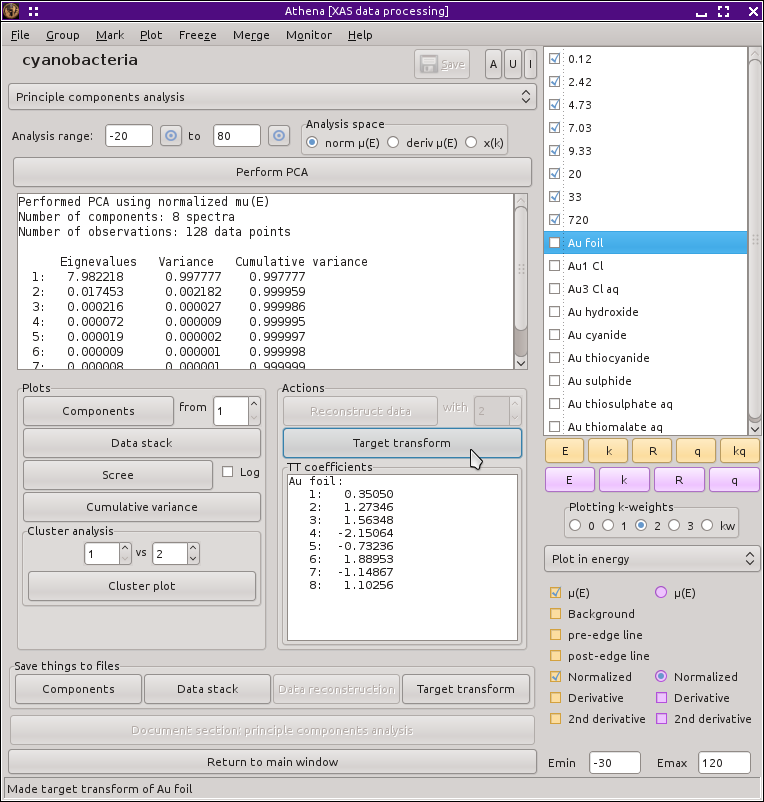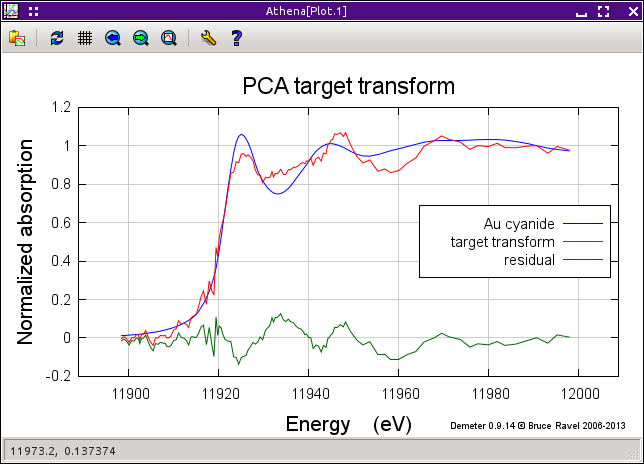Principle component analysis
Abstract decomposition of a data sequence
 Document all the buttons and whatnot. Explain what useful features
are still missing. Explain what PCA means, what it does, and what it
does not do.
Document all the buttons and whatnot. Explain what useful features
are still missing. Explain what PCA means, what it does, and what it
does not do.
Here, I have imported a project file containing well-processed data on
a time series of samples in which gold chloride is being reduced to
gold metal. The project file includes 8 time steps and 9 standards. I
cannot stress strongly enough the importance of doing a good job of
aligning and normalizing your data before embarking on PCA. This is
truly a case of garbage-in/garbage-out.
I then select the PCA tool from the main menu.
The operational concept for the PCA tool makes use of the standard
Athena group selection tools. The ensemble of marked groups are used
as the data on which the PCA will be performed. The selected group
(i.e. the one highlighted in the group list) can be either
reconstructed or target transformed. The relevant controls will be
enabled or disabled depending on whether the selected group is marked
(and therefore one of the data sets in the PCA) or not (and therefore
a subject for target transformation).
Clicking the “Perform PCA” button will
perform normalization on all the data as needed, then perform the
components analysis. Upon completion, some results are printed to the
text box and several buttons become enabled.
After the PCA completes, a plot is made of the extracted
components. This plot can be recovered by clicking the “Components” button under the “Plots” heading. The number spinner is used to restrict which
components are plotted. Because the first component is often so much
bigger than the rest, it is often useful to set that number to 2, in
which case the first (and largest) component is left off the plot.
Other plotting options include a plot of the data stack, as
interpolated into the analysis range, a scree plot (i.e. the
eigenvalues of the PCA) or its log, and the cumulative variance
(i.e. the running sum of the eigenvalues, divided by the size of the
eigenvector space). The cluster analysis plot is not yet implemented.
Once the PCA has been performed, you can reconstruct your data using 1
or more of the principle components. Here, for example, is the
reconstruction of an intermeidate time point using the top 3 components.
Selecting one of the standards in the group list enables the target
transform button. Clicking it shows the result of the transform and
displays the coefficients of the transform in the smaller text box.
The list of chores still undone for the PCA tool can be found at
my Github site.
![[Athena logo]](../../images/pallas_athene_thumb.jpg)
 Document all the buttons and whatnot. Explain what useful features
are still missing. Explain what PCA means, what it does, and what it
does not do.
Document all the buttons and whatnot. Explain what useful features
are still missing. Explain what PCA means, what it does, and what it
does not do.





